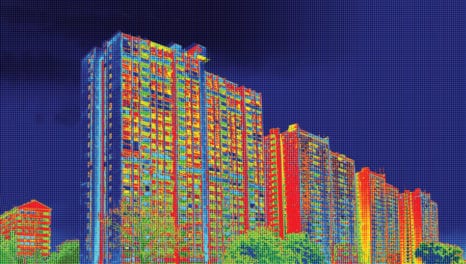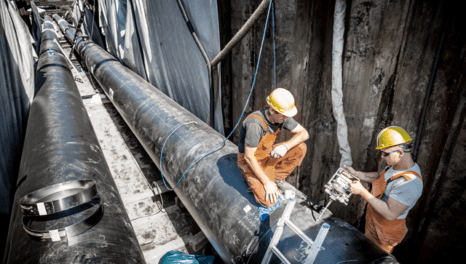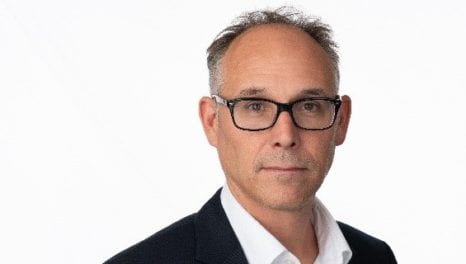Blind spot: Why telecoms must not be overlooked in the pursuit of smart grids
Network operators are relying on communications solutions that are neither reliable or secure, explains WHP Telecoms.
13th December 2016 by Networks

Research by Barclays Bank recently estimated that the UK’s power infrastructure needs an investment of £215 billion by 2030. The investment is required to satisfy a number of critical requirements. The needs include the replacement of aging assets, deployment to new industrial, residential and transport developments, and, most significantly, support for the transition from a centralised generating model towards a distributed model – in other words, a smart grid.
Significant research has been conducted in the UK and globally into the electrical plant requirements necessary for the dynamic behaviour of equipment such as transformers, switchgear, power electronics and large-scale storage systems.
Although there is still some way to go to perfect these advances, clear progress is being made. With the help of the Low Carbon Networks Fund (LCNF) initiative, some excellent proof of concept projects have been undertaken in the UK in areas such as dynamic thermal plant rating, grid storage, voltage control, electric vehicle charging points, network balancing, and so on.
However, one area yet to receive sufficient attention is the communications technology needed for all the additional devices which will be required by a smart grid. At many innovation project presentations, the communications element of the scheme is glossed over or represented by a fluffy cloud of some description.
Large innovation projects, run in a highly professional manner from the electrical perspective, appear to rely on a communications solution which is usually somewhat Heath Robinson, being neither reliable nor secure enough to be considered for mass deployment.
Although smart grid communications requirements are still being defined (and even the meaning of ‘smart grid’ is still being debated), there are some indicators already of what will be required.
Compared with the number of remotely addressable devices in today’s electricity networks, the number of devices requiring connection is expected to have to increase 100-fold to support smart grid applications. Additionally, data rates to each of these devices will need to increase by 10-100 times compared with current throughputs of, typically, 300-1200bps at 11kV level. The duty cycle of many of these systems is also very low.
There are also some specific requirements to be considered regarding the suitability of communications systems in the utility sector. While these are well known to those within the electricity industry, that is not necessarily the case for those outside it. Those specific requirements include:
• Very high levels of security (in line with critical national infrastructure guidelines).
• Availability of service throughout urban, rural, extreme rural and sub-surface locations.
• High degree of power autonomy of telecoms services (including black start criteria at many locations).
• Backwards compatibility with legacy equipment – often proprietary serial interfaces developed by individual distribution network operators (DNOs) and now defunct equipment vendors.
• Requirement for long-term future support (for decades) of systems.
• The incremental cost of adding extra devices.
Historically, the specific needs of these types of communications systems have been satisfied through a mixture of arrangements utilising some services from public telecoms operators coupled with self-provide systems (especially pilot cable and VHF/UHF radio systems) usually supported by niche equipment vendors. This approach has worked well for decades, and successive upgrades to the technology have allowed the controlled use of an increasing number of secondary substations to facilitate the functioning of the highly reliable electricity network that we have today. However, a huge change is now looming.
Smart grid comms standardisation
There is perhaps an assumption by electrical design engineers that a telecoms solution will present itself from some as yet unknown source, either through a self-provided connection via a small internal telecoms team, or by placing an order with an external telecoms operator. Unfortunately, neither of these options is currently available for rapid deployment or satisfies the relevant technical criteria.
The enormous increase in the number of devices and the data throughput required in the future will necessitate an increase of something like two orders of magnitude over the capability of the current supporting telecoms infrastructure.
This capability cannot be built using the limited internal telecoms resources of most UK power companies. The electricity industry will have to bring in external resource to design and implement the upgrades required for the telecoms infrastructure to support smart grids.
Typically, DNOs’ telecoms teams are fully occupied in managing the move away from legacy time-division multiplexing (TDM) and plesiochronous digital hierarchy (PDH) telecoms services – which are rapidly becoming obsolete – to IP and ethernet alternatives.
This migration is in itself an enormous undertaking. The same teams are also managing a large number of new connections to wind and solar installations using telecoms technology which is very limited in its expansion capability. In short, telecoms resource in the utility sector is in short supply.
There are, of course, a number of specialist telecoms equipment vendors in the utility sector that produce high-quality products with excellent reliability. There is however, a potential issue when considering these types of equipment vendor for large-scale rollout. The problem is that the size of many of the suppliers involved now presents a commercial credibility issue in light of the scale of the deployments ahead.
When considering engagement between UK power companies and the large telecoms operators, which could credibly undertake such high-profile projects, it quickly becomes apparent that a lack of standardisation/agreement is a substantial challenge. Having been largely self-sufficient in telecommunications services for decades, the interaction between utility customers and telecoms operators has been limited, with each sector having its own specialist knowledge but not necessarily sharing (to a sufficient degree) the capability and requirements with the other.
At present, the UK’s DNOs all investigate communications solutions independently of each other. But without a common set of requirements, it is unlikely that any UK telecoms operator will see the electricity sector as an attractive revenue opportunity.
As it stands, each DNO would require unique hardware, teams and services to satisfy its particular set of requirements. It is possible to resolve this by means of collaboration. After all, the electrical plant in most DNO networks is standardised and all the DNOs have the same goals of reducing costs, maximising system availability and reducing CO2 emissions through the increased use of distributed renewable generation. However, individual DNOs are not currently incentivised to standardise their smart grid communication requirements. The modest degree of standardisation which currently exists has been sufficient for the purposes of a centralised generating model, but it needs to move on sufficiently if it is to allow the cost-effective implementation of smart grids in the UK.
Technology options
There are numerous communication technology options under consideration at the moment for smart grid connectivity. They include traditional solutions such as VHF and UHF radio, pilot cable XDSL, 2G GPRS modems and digital mobile radio. Leading (and bleeding) edge solutions include mesh radios, power line communications, TV white space, narrow-band LTE, LoRa, Sigfox, 5G and satellite.
Following numerous technology trials there is a generally held consensus that no one of these solutions is suitable in every situation. The real solution is likely to comprise a hybrid of three or four of the above. There are close parallels here with the challenges faced in providing ubiquitous broadband coverage – the panacea of fibre-optic connectivity everywhere is simply too expensive, but a combination of fibre, copper and wireless solutions is gradually filling in the gaps.
A challenge for the power industry is that discussions between hardware vendors and telecoms network operators often fail to adequately address the full breadth and specification required.
That is particularly the case if the motivation of a supplier is only to convince the utility sector that its solution alone will address all connectivity scenarios.
As a result, we repeatedly see small ‘pockets’ of telecoms technology successfully deployed in localised trials but without any thought towards a holistic solution or follow-on deployment on a national scale.
In mainland Europe, a number of electricity companies have already begun to adopt a standardised approach. In Holland and Germany in particular, discussions and deployments around a standardised utility telecoms infrastructure are well advanced. The benefits of such a solution appear to have been recognised by all stakeholders.
The UK has a competitive energy market and relatively low prices achieved through a market forces approach. Ofgem’s use of incentives that are not overly prescriptive as to how individual companies achieve attractive pricing and service levels has been successful in this regard. However, it is possible that the once in a generation transition to a full smart grid will require a different approach to ensure that the UK benefits to the fullest extent possible and doesn’t inadvertently lag behind the other major economies. The standardisation of electrical plant is likely to occur as a consequence of the small number of major suppliers globally, which do work closely together. However, currently the supporting telecoms infrastructure receives insufficient attention.
Testing and validation
The ability to test and validate the right mix of future networks communications that will be needed to support the UK’s transition to a smart grid has to be undertaken now across the DNO community. The UK already has the testing infrastructure available to support this activity and some work is already being undertaken.
The Power Networks Demonstration Centre (PNDC) near Glasgow has a dedicated communications and systems integration research programme that is investigating these communications technologies to understand and ultimately to accelerate the development of the optimum solution for meeting the DNOs’ future requirements.
Three of the UK’s DNOs – Scottish Power Energy Networks, Scottish and Southern Electricity Networks, and UK Power Networks – are currently active in the PNDC’s programme along with global comms companies Vodafone and Cisco. However, if the comms landscape is to be fully realised, all six DNOs need to collaborate, as do a larger number of telecoms providers, so that a standardised approach is achieved.
Comments
Login on register to comment
Related content

Heat
Electric storage heating – a Cinderella solution
Why has electric storage heating been overlooked as we seek to tackle decarbonising domestic heat?

Heat
Prospects bright for landmark East London Heat Network
New Vattenfall-Cory partnership marks step towards record-breaking heat network capable of serving over 10,000 homes

Heat
New construction director at Switch2 Energy
Appointee brings experience from Vattenfall and Eon
Related supplier content
![‘Learning by doing’ on the road to net zero [test product]](https://networksonline.s3.amazonaws.com/products/images/3.jpg)
People & Skills
‘Learning by doing’ on the road to net zero [test product]
DSO director Andrew Roper discusses 'Learning by doing'

Power
Load patterns and lockdown: how Covid-19 is impacting electricity networks
Insights into dynamics on the low voltage network as the outbreak unfolds

Downloads
Protect electrical equipment from insulation failure
Insulation faults are a major cause leading to the eventual failure of electrical equipment. Partial discharge (PD) is a very reliable indicator of developing insulation faults. Regular PD testing allows users to detect and analyze PD activity